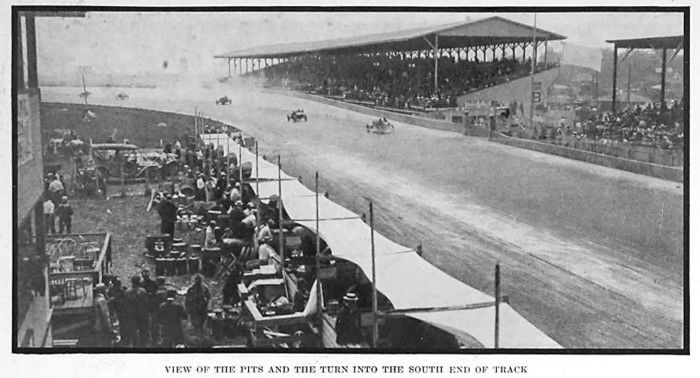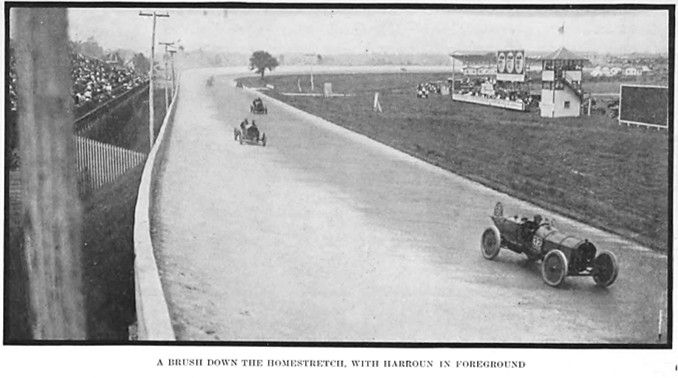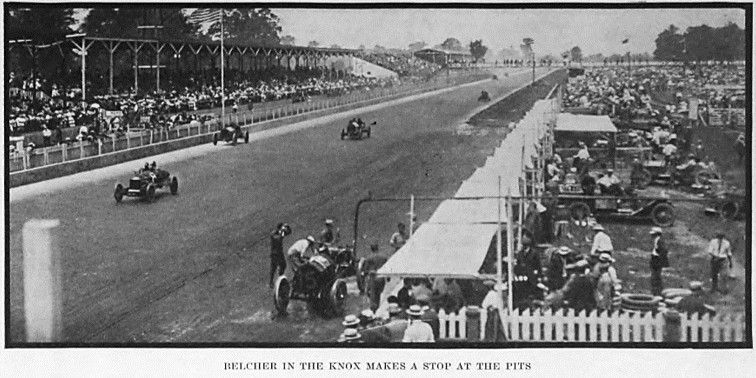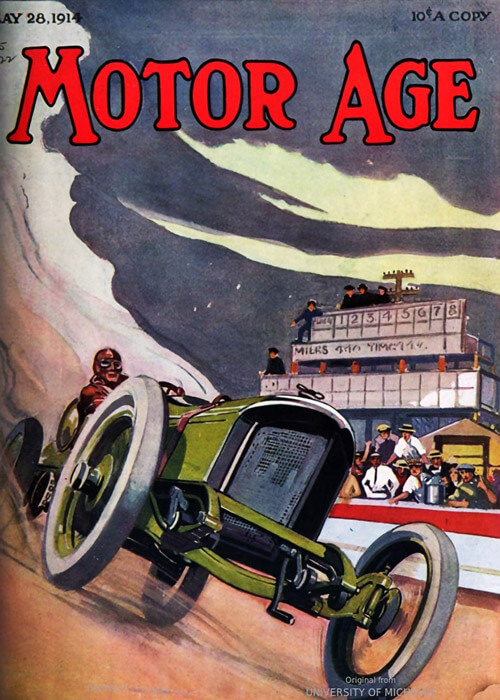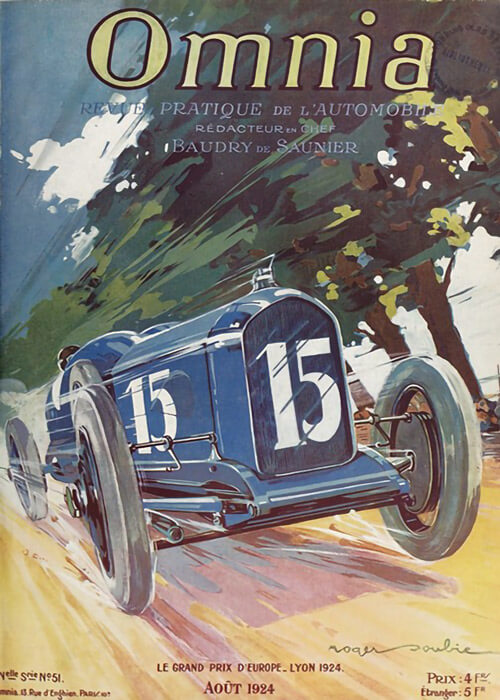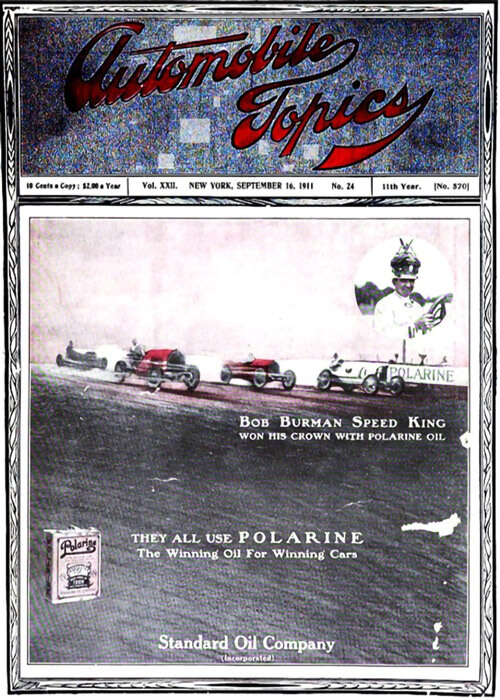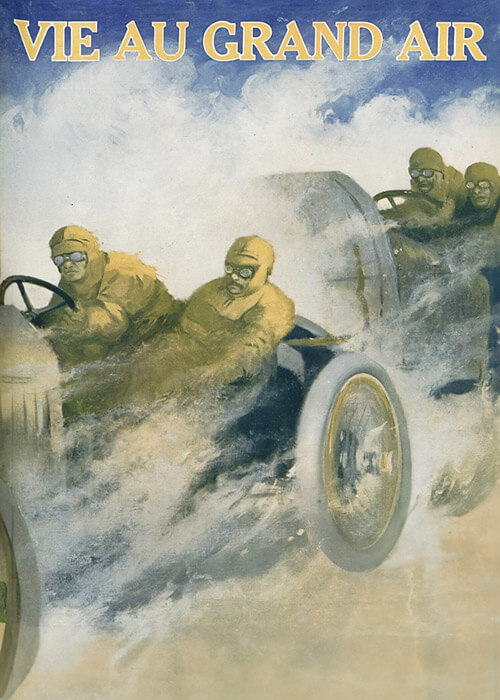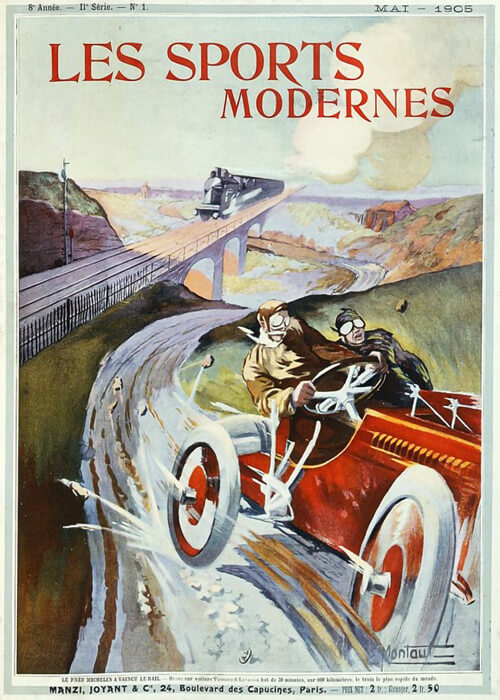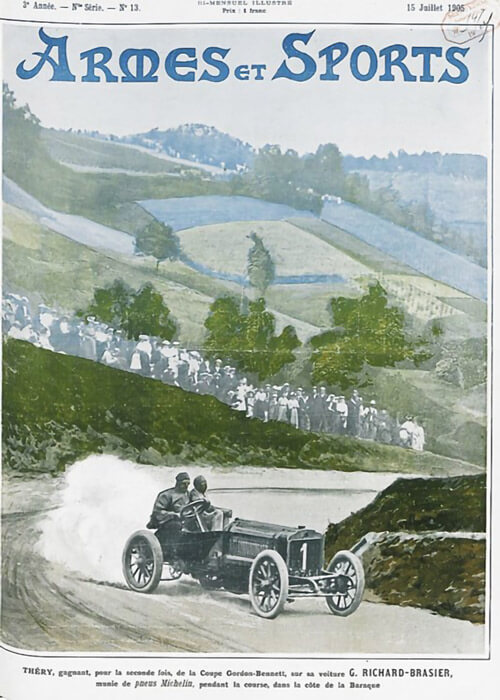In this 1st June issue of Motor Age, the entire 500-mile race is characterized. How the race developped in general and the fierce battle in the end phase of the race. But particularly the accident that caused the death of the mechanicien Samuel Dickson, is descibed.
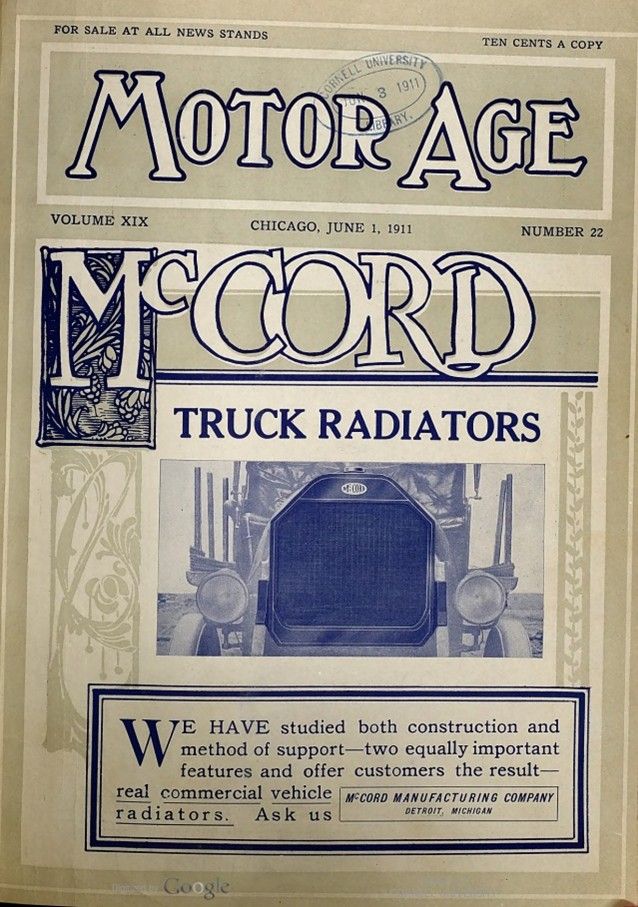
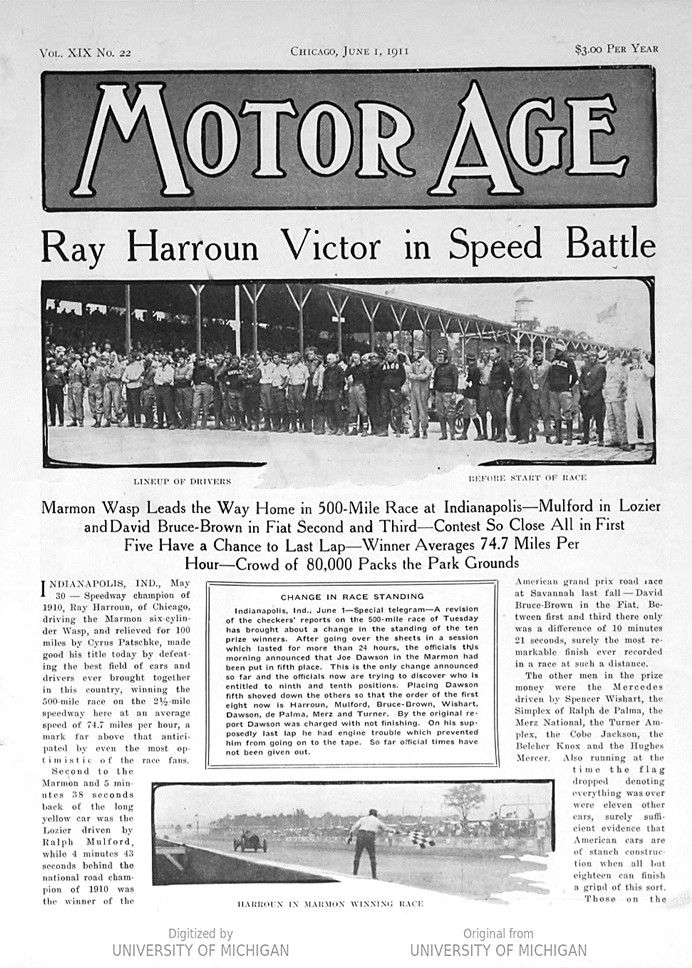
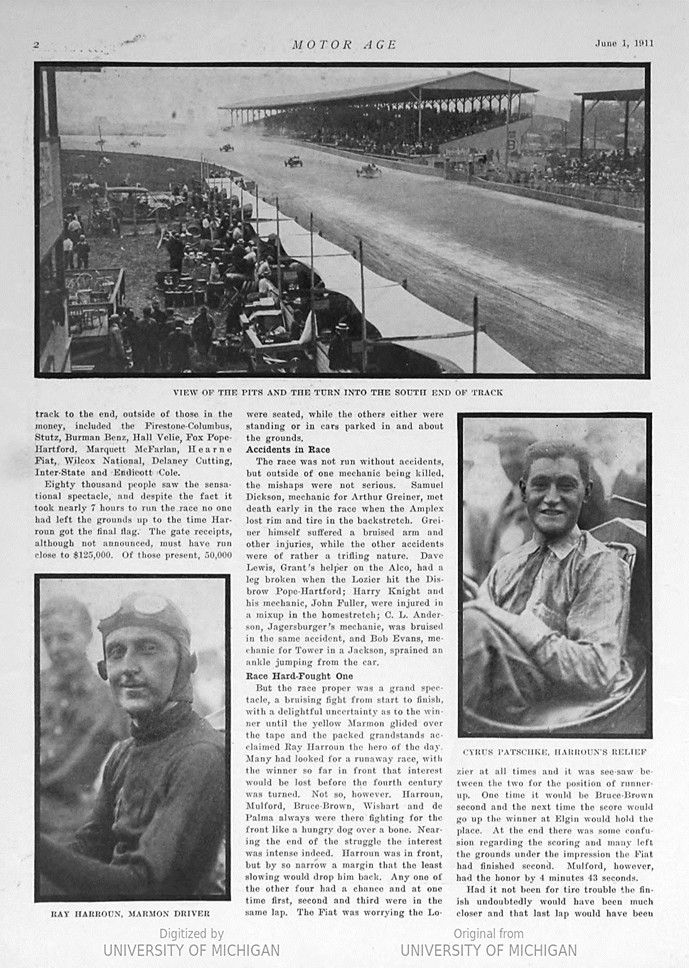
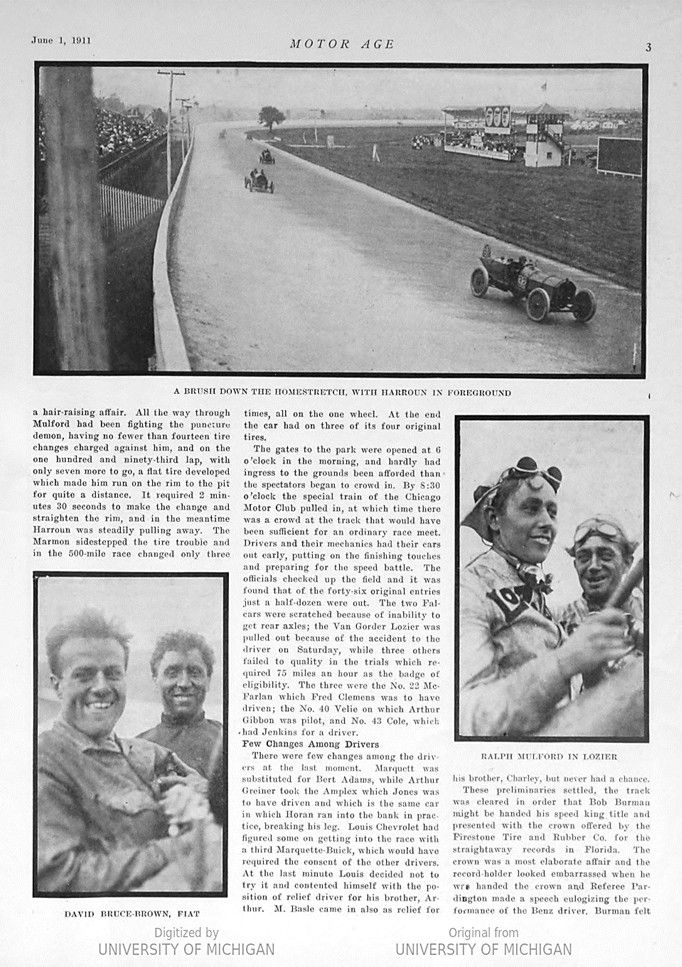

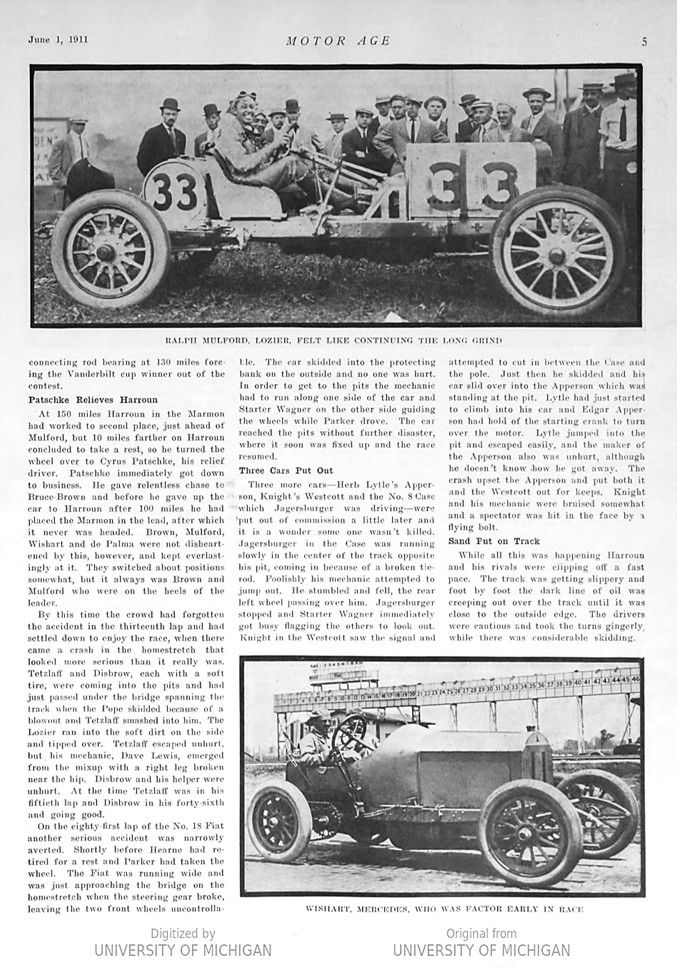
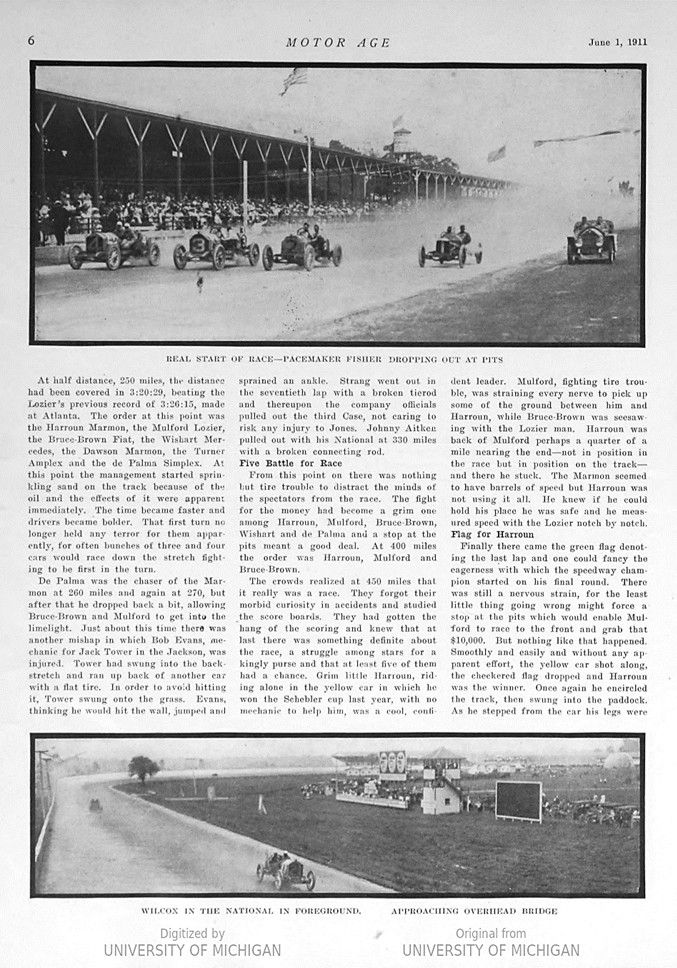
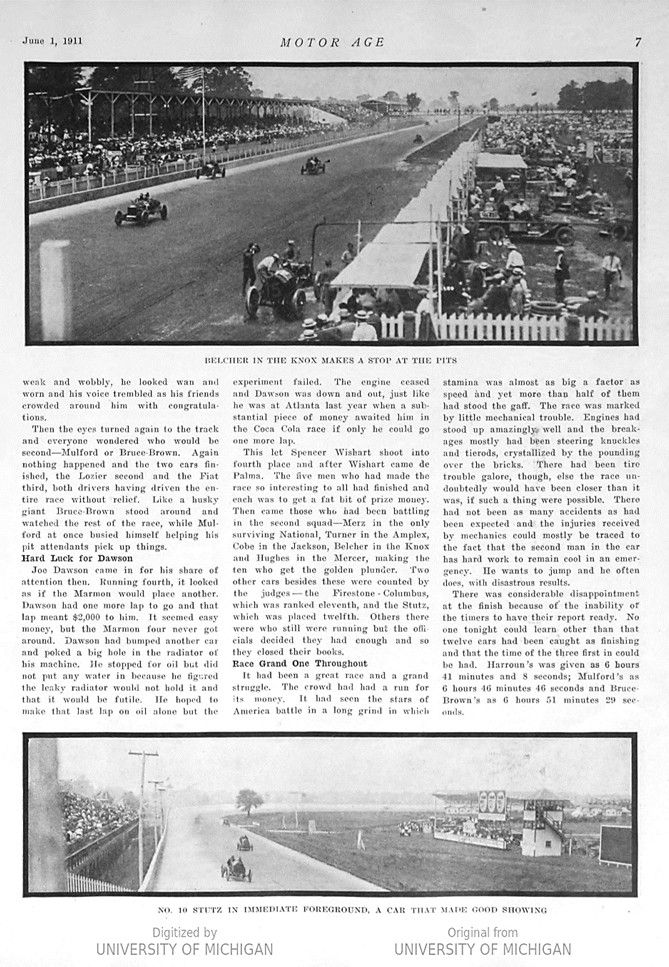
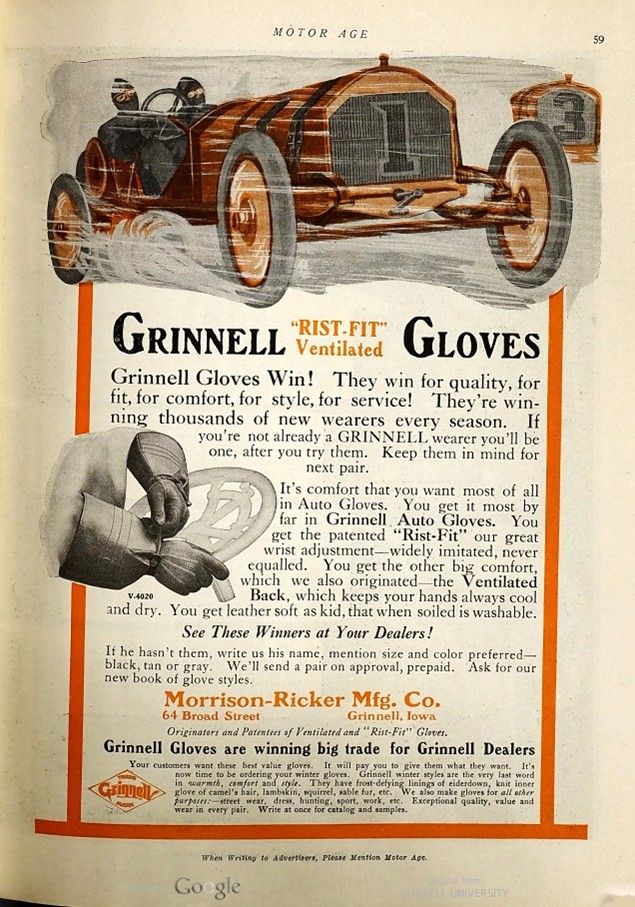
Text and jpegs by courtesy of hathitrust.org www.hathitrust.org, compiled by motorracinghistory.com
Motor Age, Vol. XIX, No. 22, June 1, 1911
Ray Harroun Victor in Speed Battle
Marmon Wasp Leads the Way Home in 500-Mile Race at Indianapolis — Mulford in Lozier and David Bruce-Brown in Fiat Second and Third – Contest So Close All in First Five Have a Chance to Last Lap — Winner Averages 74.7 Miles Per Hour — Crowd of 80,000 Packs the Park Grounds
CHANGE IN RACE STANDING
Indianapolis, Ind., June 1 – Special telegram – A revision of the checkers‘ reports on the 500-mile race of Tuesday has brought about a change in the standing of the ten prize winners. After going over the sheets in a session which lasted for more than 24 hours, the officials this morning announced that Joe Dawson in the Marmon had been put in fifth place. This is the only change announced so far and the officials now are trying to discover who is entitled to ninth and tenth positions. Placing Dawson fifth shoved down the others so that the order of the first eight now is Harroun, Mulford, Bruce-Brown, Wishart, Dawson, de Palma, Merz and Turner. By the original report Dawson was charged with not finishing. On his supposedly last lap he had engine trouble which prevented him from going on to the tape. So far official times have not been given out.
INDIANAPOLIS, IND., May 30 – Speedway champion of 1910, Ray Harroun, of Chicago, driving the Marmon six-cylinder Wasp, and relieved for 100 miles by Cyrus Patschke, made good his title today by defeating the best field of cars and drivers ever brought together in this country, winning the 500-mile race on the 2%-mile speedway here at an average speed of 74.7 miles per hour, a mark far above that anticipated by even the most optimistic of the race fans.
Second to the Marmon and 5 minutes 38 seconds back of the long yellow car was the Lozier driven by Ralph Mulford, while 4 minutes 43 seconds behind the national road champion of 1910 was the winner of the American grand prix road race at Savannah last fall – David Bruce-Brown in the Fiat. Between first and third there only was a difference of 10 minutes 21 seconds, surely the most remarkable finish ever recorded in a race at such a distance.
The other men in the prize money were the Mercedes driven by Spencer Wishart, the Simplex of Ralph de Palma, the Merz National, the Turner Amplex, the Cobe Jackson, the Belcher Knox and the Hughes Mercer. Also running at the time the flag dropped denoting everything was over were eleven other cars, surely sufficient evidence that American cars are of stanch construction when all but eighteen can finish a grind of this sort. Those on the track to the end, outside of those in the money, included the Firestone-Columbus, Stutz, Burman Benz, Hall Velie, Fox Pope-Hartford, Marquett McFarlan, Hearne Fiat, Wilcox National, Delaney Cutting, Inter-State and Endicott Cole.
Eighty thousand people saw the sensational spectacle, and despite the fact it took nearly 7 hours to run the race no one had left the grounds up to the time Harroun got the final flag. The gate receipts, although not announced, must have run close to $125,000. Of those present, 50,000 were seated, while the others either were standing or in cars parked in and about the grounds.
Accidents in Race
The race was not run without accidents, but outside of one mechanic being killed, the mishaps were not serious. Samuel Dickson, mechanic for Arthur Greiner, met death early in the race when the Amplex lost rim and tire in the backstretch. Greiner himself suffered a bruised arm and other injuries, while the other accidents were of rather a trifling nature. Dave Lewis, Grant’s helper on the Alco, had a leg broken when the Lozier hit the Disbrow Pope-Hartford; Harry Knight and his mechanic, John Fuller, were injured in a mixup in the homestretch; C. L. Anderson, Jagersburger’s mechanic, was bruised in the same accident, and Bob Evans, mechanic for Tower in a Jackson, sprained an ankle jumping from the car.
Race Hard-Fought One
But the race proper was a grand spectacle, a bruising fight from start to finish, with a delightful uncertainty as to the winner until the yellow Marmon glided over the tape and the packed grandstands acclaimed Ray Harroun the hero of the day. Many had looked for a runaway race, with the winner so far in front that interest would be lost before the fourth century was turned. Not so, however. Harroun, Mulford, Bruce-Brown, Wishart and de Palma always were there fighting for the front like a hungry dog over a bone. Nearing the end of the struggle the interest was intense indeed. Harroun was in front, but by so narrow a margin that the least slowing would drop him back. Any one of the other four had a chance and at one time first, second and third were in the same lap. The Fiat was worrying the Lozier at all times and it was see-saw between the two for the position of runner-up. One time it would be Bruce-Brown second and the next time the score would go up the winner at Elgin would hold the place. At the end there was some confusion regarding the scoring and many left the grounds under the impression the Fiat had finished second. Mulford, however, had the honor by 4 minutes 43 seconds. Had it not been for tire trouble the finish undoubtedly would have been much closer and that last lap would have been a hair-raising affair. All the way through Mulford had been fighting the puncture demon, having no fewer than fourteen tire changes charged against him, and on the one hundred and ninety-third lap, with only seven more to go, a flat tire developed which made him run on the rim to the pit for quite a distance. It required 2 minutes 30 seconds to make the change and straighten the rim, and in the meantime Harroun was steadily pulling away. The Marmon sidestepped the tire trouble and in the 500-mile race changed only three times, all on the one wheel. At the end the car had on three of its four original tires.
The gates to the park were opened at 6 o’clock in the morning, and hardly had ingress to the grounds been afforded than the spectators began to crowd in. By 8:30 o’clock the special train of the Chicago Motor Club pulled in, at which time there was a crowd at the track that would have been sufficient for an ordinary race meet. Drivers and their mechanics had their cars out early, putting on the finishing touches and preparing for the speed battle. The officials checked up the field and it was found that of the forty-six original entries just a half-dozen were out. The two Falcars were scratched because of inability to get rear axles; the Van Gorder Lozier was pulled out because of the accident to the driver on Saturday, while three others failed to quality in the trials which required 75 miles an hour as the badge of eligibility. The three were the No. 22 Mc-Farlan which Fred Clemens was to have driven; the No. 40 Velie on which Arthur Gibbon was pilot, and No. 43 Cole, which had Jenkins for a driver.
Few Changes Among Drivers
There were few changes among the drivers at the last moment. Marquett was substituted for Bert Adams, while Arthur Greiner took the Amplex which Jones was to have driven and which is the same car in which Horan ran into the bank in practice, breaking his leg. Louis Chevrolet had figured some on getting into the race with a third Marquette-Buick, which would have required the consent of the other drivers, At the last minute Louis decided not to try it and contented himself with the position of relief driver for his brother, Arthur. M. Basle came in also as relief for his brother, Charley, but never had a chance.
These preliminaries settled, the track was cleared in order that Bob Burman might be handed his speed king title and presented with the crown offered by the Firestone Tire and Rubber Co. for the straightaway records in Florida. The crown was a most elaborate affair and the record-holder looked embarrassed when he was handed the crown and Referee Pardington made a speech eulogizing the performance of the Benz driver. Burman felt particularly happy anyway because of the addition he made to his record collection yesterday. Officially timed, he went the 14-mile in :08.16; the kilometer in :21.40, the 1/2-mile in :16.83 and the mile in :35,35, all of which formerly were held by Barney Oldfield. In these dashes Burman drove the Blitzen Benz.
Clearing Decks for Action
Handing Burman the crown left the decks clear for action and preparations were rushed to stage the big show, the 500-mile race. All the details had been carefully rehearsed before—how Carl Fisher was to set pace for the first lap, which was to be a slow one, while the drivers were getting their position, and as they crossed the tape the second time the race was to be on. There wasn’t a hitch. The field was lined up five cars to the row, with the pole car as pacemaker for each squad and Billy Knipper in the Benz by himself at the rear. As if on dress parade the forty cars and the pacemaker made the first lap, probably 100 feet separating each squad, and at the tape Fisher swung over to the pits, while an aerial bomb announced that the race was on in earnest.
Johnny Aitken in the National assumed the aggressive at the start, being favored by a starting position in the first squad and it was his blue car that led at the end of the first round, with Harry Endicott in the Inter-State right at his heels. Wishart in the big Mercedes was fourth, but he didn’t stay there long. He collared Aitken easily and at once went into a lead that made the crowd feel that the crown of favoritism that had been placed on the driver of the German car was not misplaced. Wishart had the front of the flock at the first 10 miles, with Aitken runner-up and the Knox third. By this time the field had settled down. Wishart and Belcher in the Knox were the leaders at 20 miles and Bruce-Brown had worked up to third. Before leaders could be announced again the first accident in the race occurred. In the thirteenth lap the Amplex came to grief. Greimer had just swung into the backstretch when tire and rim came off. In the resulting smash Mechanic Dickson was killed and Greiner injured.
Knox Shows in Front
Belcher in the Knox had been making good use of his position up in front and at the 30-mile post he had ousted Wishart, while Aitken had run into second and Bruce-Brown had dropped to third. At 40 miles Bruce-Brown had worked to first and those strung out in his immediate rear were de Palma in the Fiat, Aitken in the National, Belcher in the Knox, Dawson in the Marmon, Mulford in the Lozier, Bragg in the Fiat, Wishart in the Mercedes, Tetzlaff in the Lozier and Grant in the Alco. The big fellows had settled into their stride and the battle was on in earnest.
Shortly after this Bragg in the Fiat came to grief, a broken piston ring putting the Italian car out of commission and making a spectator out of Bragg. At 50 miles Aitken was the leader, with Bruce-Brown chasing him and at 60 miles de Palma had the post of honor for the first and only time during the day, Bruce-Brown being his pursuer. De Palma enjoyed his position only for a brief spell, when he was forced back by the grand prix winner who then and there made a bold stab to land the race. From the 70 to the 180-mile mark it was Bruce-Brown’s number that occupied the premier position on the score board and it looked bright for the New Yorker, Back of him the field was switching about. De Palma was second at 70 and 80 miles but at 90 the two white Loziers had woven their way to the front, Tetzlaff being in second place and Mulford third. At the century Mulford was leading Tetzlaff for second place. Mulford stuck there to 140 miles, when de Palma worked up, Just previous to this a most formidable candidate for the honors, Grant in the Alco, was put out, a burned out connecting rod bearing at 130 miles forcing the Vanderbilt cup winner out of the contest.
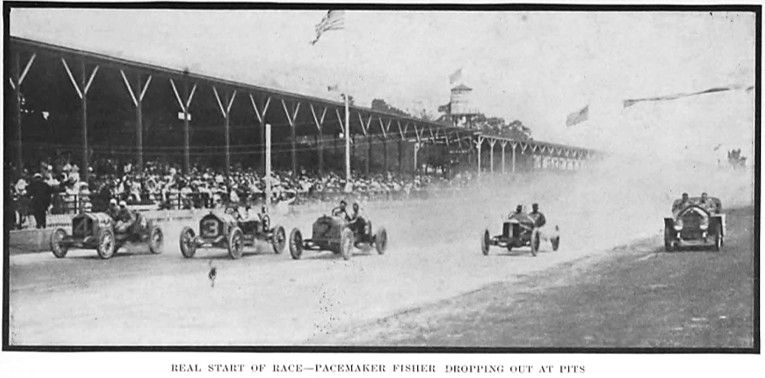
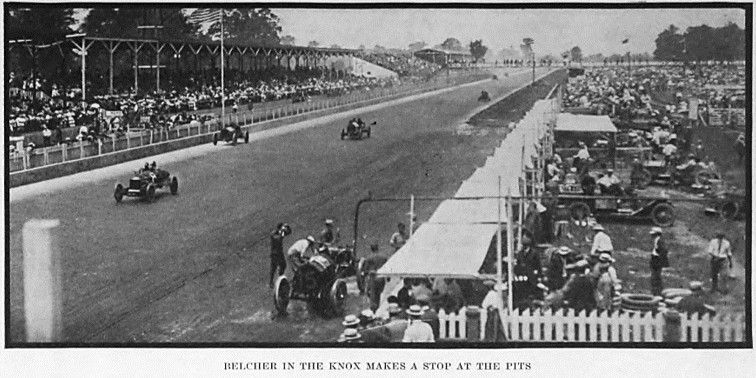
Patschke Relieves Harroun
At 150 miles Harroun in the Marmon had worked to second place, just ahead of Mulford, but 10 miles farther on Harroun concluded to take a rest, so he turned the wheel over to Cyrus Patschke, his relief driver, Patschke immediately got down to business. He gave relentless chase to Bruce-Brown and before he gave up the car to Harroun after 100 miles he had placed the Marmon in the lead, after which it never was headed. Brown, Mulford, Wishart, and de Palma, were not disheartened by this, however, and kept everlastingly at it. They switched about positions somewhat, but it always was Brown and Mulford who were on the heels of the leader.
By this time the crowd had forgotten the accident in the thirteenth lap and had settled down to enjoy the race, when there came a crash in the homestretch that looked more serious than it really was. Tetzlaff and Disbrow, each with a soft tire, were coming into the pits and had just passed under the bridge spanning the track when the Pope skidded because of a blowout and Tetzlaff smashed into him. The Lozier ran into the soft dirt on the side and tipped over. Tetzlaff escaped unhurt, but his mechanic, Dave Lewis, emerged from the mixup with a right leg broken near the hip. Disbrow and his helper were unhurt. At the time Tetzlaff was in his fiftieth lap and Disbrow in his forty-sixth and going good.
On the eighty-first lap of the No. 18 Fiat another serious accident was narrowly averted. Shortly before Hearne had retired for a rest and Parker had taken the wheel. The Fiat was running wide and was just approaching the bridge on the homestretch when the steering gear broke, leaving the two front wheels uncontrollable. The car skidded into the protecting bank on the outside and no one was hurt. In order to get to the pits the mechanic had to run along one side of the car and Starter Wagner on the other side guiding the wheels while Parker drove. The car reached the pits without further disaster, where it soon was fixed up and the race resumed.
Three Cars Put Out
Three more cars—Herb Lytle’s Apperson, Knight’s Westcott and the No. 8 Case which Jagersburger was driving—were put out of commission a little later and it is a wonder some one wasn’t killed. Jagersburger in the Case was running * º slowly in the center of the track opposite his pit, coming in because of a broken tie-rod. Foolishly his mechanic attempted to jump out. He stumbled and fell, the rear left wheel passing over him. Jagersburger stopped and Starter Wagner immediately got busy flagging the others to look out. Knight in the Westcott saw the signal and attempted to cut in between the Case and the pole. Just then he skidded and his car slid over into the Apperson which was standing at the pit. Lytle had just started to climb into his car and Edgar Apperson had hold of the starting crank to turn motor. Lytle jumped into the pit and escaped easily, and the maker of the Apperson also was unhurt, although he doesn’t know how he got away. The crash upset the Apperson and put both it and the Westcott out for keeps. Knight and his mechanic were bruised somewhat and a spectator was hit in the face by a flying bolt.
Sand Put on Track
While all this was happening Harroun and his rivals were clipping off a fast pace. The track was getting slippery and foot by foot the dark line of oil was creeping out over the track until it was close to the outside edge. The drivers were cautious and took the turns gingerly, while there was considerable skidding.
At half distance, 250 miles, the distance had been covered in 3:20:29, beating the Lozier’s previous record of 3:26:15, made at Atlanta. The order at this point was the Harroun Marmon, the Mulford Lozier, the Bruce-Brown Fiat, the Wishart Mercedes, the Dawson Marmon, the Turner Amplex and the de Palma Simplex. At this point the management started sprinkling sand on the track because of the oil and the effects of it were apparent immediately. The time became faster and drivers became bolder. That first turn no longer held any terror for them apparently, for often bunches of three and four cars would race down the stretch fighting to be first in the turn.
De Palma was the chaser of the Marmon at 260 miles and again at 270, but after that he dropped back a bit, allowing Bruce-Brown and Mulford to get into the limelight. Just about this time there was another mishap in which Bob Evans, mechanic for Jack Tower in the Jackson, was injured. Tower had swung into the back-stretch and ran up back of another car with a flat tire. In order to avoid hitting it, Tower swung onto the grass. Evans, thinking he would hit the wall, jumped and sprained an ankle. Strang went out in the seventieth lap with a broken tierod and thereupon the company officials pulled out the third Case, not caring to risk any injury to Jones. Johnny Aitken pulled out with his National at 330 miles with a broken connecting rod.
Five Battle for Race
From this point on there was nothing but tire trouble to distract the minds of the spectators from the race. The fight for the money had become a grim one among Harroun, Mulford, Bruce-Brown, Wishart and de Palma and a stop at the pits meant a good deal. At 400 miles the order was Harroun, Mulford and Bruce-Brown.
The crowds realized at 450 miles that it really was a race. They forgot their morbid curiosity in accidents and studied They had gotten the hang of the scoring and knew that at last there was something definite about the race, a struggle among stars for a kingly purse and that at least five of them had a chance. Grim little Harroun, riding alone in the yellow car in which he won the Schebler cup last year, with no mechanic to help him, was a cool, confident leader. Mulford, fighting tire trouble, was straining every nerve to pick up some of the ground between him and Harroun, while Bruce-Brown was seesawing with the Lozier man. Harroun was back of Mulford perhaps a quarter of a mile nearing the end—not in position in the race but in position on the track– and there he stuck. The Marmon seemed to have barrels of speed but Harroun was not using it all. He knew if he could hold his place he was safe and he measured speed with the Lozier notch by notch.
Flag for Harroun
Finally there came the green flag denoting the last lap and one could fancy the eagerness with which the speedway champion started on his final round. There was still a nervous strain, for the least little thing going wrong might force a stop at the pits which would enable Mulford to race to the front and grab that $10,000. But nothing like that happened. Smoothly and easily and without any apparent effort, the yellow car shot along, the checkered flag dropped and Harroun was the winner. Once again he encircled the track, then swung into the paddock. As he stepped from the car his legs were weak and wobbly, he looked wan and worn and his voice trembled as his friends crowded around him with congratulations.
Then the eyes turned again to the track and everyone wondered who would be second—Mulford or Bruce-Brown. Again nothing happened and the two cars finished, the Lozier second and the Fiat third, both drivers having driven the entire race without relief. Like a husky giant Bruce-Brown stood around and watched the rest of the race, while Mulford at once busied himself helping his pit attendants pick up things.
Hard Luck for Dawson
Joe Dawson came in for his share of attention then. Running fourth, it looked as if the Marmon would place another. Dawson had one more lap to go and that lap meant $2,000 to him. It seemed easy money, but the Marmon four never got around. Dawson had bumped another car and poked a big hole in the radiator of his machine. He stopped for oil but did not put any water in because he figured the leaky radiator would not hold it and that it would be futile. He hoped to make that last lap on oil alone but the experiment failed. The engine ceased and Dawson was down and out, just like he was at Atlanta last year when a substantial piece of money awaited him in the Coca Cola race if only he could go one more lap.
This let Spencer Wishart shoot into fourth place and after Wishart came de Palma. The five men who had made the race so interesting to all had finished and each was to get a fat bit of prize money. Then came those who had been battling in the second squad—Merz in the only surviving National, Turner in the Amplex, Cobe in the Jackson, Belcher in the Knox and Hughes in the Mercer, making the ten who get the golden plunder. Two other cars besides these were counted by the judges – the Firestone – Columbus, which was ranked eleventh, and the Stutz, which was placed twelfth. Others there were who still were running but the officials decided they had enough and so they closed their books.
Race Grand One Throughout
It had been a great race and a grand struggle. The crowd had had a run for its money. It had seen the stars of America battle in a long grind in which stamina was almost as big a factor as speed and yet more than half of them had stood the gaff. The race was marked by little mechanical trouble. Engines had stood up amazingly well and the breakages mostly had been steering knuckles and tierods, crystallized by the pounding over the bricks. There had been tire trouble galore, though, else the race undoubtedly would have been closer than it was, if such a thing were possible. There had not been as many accidents as had been expected and the injuries received by mechanics could mostly be traced to the fact that the second man in the car has hard work to remain cool in an emergency. He wants to jump and he often does, with disastrous results.
There was considerable disappointment at the finish because of the inability of the timers to have their report ready. No one tonight could learn other than that twelve cars had been caught as finishing and that the time of the three first in could be had. Harroun’s was given as 6 hours 41 minutes and 8 seconds; Mulford’s as 6 hours 46 minutes 46 seconds and Bruce. Brown’s as 6 hours 51 minutes 29 seconds.
Photo captions.
Page 1 – 7
LINEUP OF DIRIVERS BEFORE START OF RACE – HARROUN IN MARMON WINNING RACE
VIEW OF THE PITS AND THE TURN INTO THE SOUTH END OF TRACK – RAY HARROUN, MARMON DRIVER – CYRUS PATSCHKE, HARROUN’S RELIEF
A BRUSH DOWN THE HOMESTRETCH, WITH HARROUN IN FOREGROUND – DAVID BRUCE-BROWN, FIAT – RALPH MULFORD IN LOZIER
RAY HARROUN, IN SIX-CYLINIDER MARMON, HERO OF THE DAY – AS BRUCE BROWN, FIAT, LOOKED AT THE FINISH
RALPH MULFORD, LOZIER, FELT LIKE CONTINUING THE LONG GRIND – WISHART; MERCEDES; WHO WAS FACTOR EARLY IN RACE
REAL START OF RACE – PACEMAKER DROPPING OUT AT PITS – WILCOX IN THE NATIONAL IN FOREGROUND; APPROACHING OVERHEAD BRIDGE
BELCHER AT THE KNOX MAKES A STOP AT THE PITS – NO. 10 STUTZ IN IMMEDIATE FOREGROUND, A CAR THAT MADE GOOD SHOWING
